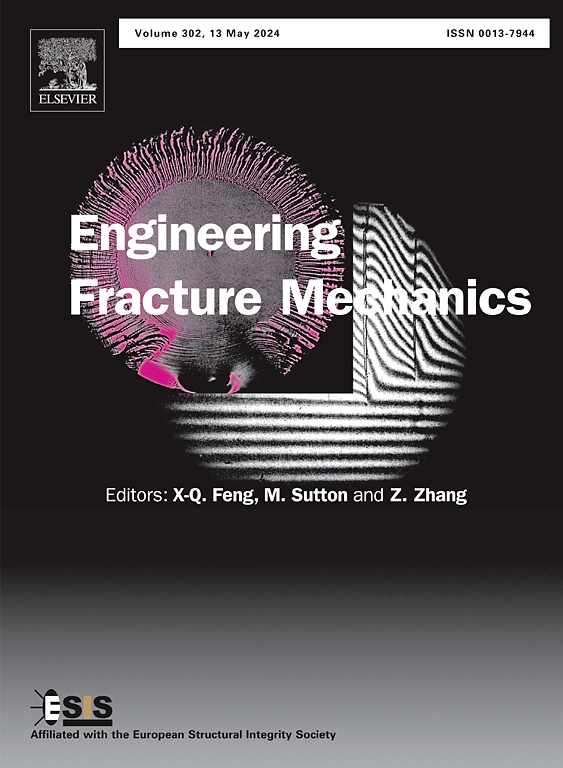Surface integrity and low cycle fatigue behavior of Ni-based single-crystal film cooling holes processed by ECM, EDM and PLM
IF 4.7
2区 工程技术
Q1 MECHANICS
引用次数: 0
Abstract
Surface integrity and low cycle fatigue (LCF) behavior of Ni-based single crystal film cooling hole (FCH) structures manufactured via three different processes—Electrochemical Machining (ECM), Electrical Discharge Machining (EDM), and Picosecond Laser Machining (PLM)—were investigated at high temperature. The surface integrity resulting from different drilling methods was analyzed across three aspects: geometry, metallurgy and roughness. Experimental results indicate that the LCF lifetime is significantly influenced by the drilling processes, with the order being NECM > NEDM > NPLM. In addition, while the drilling process minimally impacts the macroscopic fracture path and fracture morphology, it greatly influences the microstructural evolution near the cracks around the FCHs. Utilizing geometric reconstruction modeling, the crystal plasticity finite element method (CPFEM) was performed for three kinds of FCH model. The maximum resolved shear stress (RSS) around the three FCH models is mainly affected by surface integrity, with the order being RSSECM > RSSEDM > RSSPLM. Moreover, the fatigue damage distribution locations in all FCH models align well with the fatigue crack nucleation position observed in experiments. The fatigue life simulated using the damage evolution law falls within the error bands of ±2 times.
ECM、EDM和PLM加工镍基单晶膜冷却孔的表面完整性和低周疲劳行为
研究了电化学加工(ECM)、电火花加工(EDM)和皮秒激光加工(PLM)三种不同工艺制备的镍基单晶膜冷却孔(FCH)结构在高温下的表面完整性和低周疲劳(LCF)行为。从几何、冶金和粗糙度三个方面分析了不同钻孔方法造成的表面完整性。实验结果表明,钻削工艺对LCF寿命有显著影响,影响顺序为NECM >;NEDM祝辞NPLM。此外,虽然钻井过程对宏观裂缝路径和裂缝形态的影响很小,但对FCHs周围裂缝附近的微观组织演化影响很大。利用几何重构模型,对三种FCH模型进行了晶体塑性有限元分析。三种FCH模型周围的最大分解剪应力(RSS)主要受表面完整性的影响,大小顺序为RSSECM >;RSSEDM祝辞RSSPLM。此外,所有FCH模型的疲劳损伤分布位置与实验观察到的疲劳裂纹形核位置吻合良好。采用损伤演化规律模拟的疲劳寿命在±2倍的误差范围内。
本文章由计算机程序翻译,如有差异,请以英文原文为准。
求助全文
约1分钟内获得全文
求助全文
来源期刊
CiteScore
8.70
自引率
13.00%
发文量
606
审稿时长
74 days
期刊介绍:
EFM covers a broad range of topics in fracture mechanics to be of interest and use to both researchers and practitioners. Contributions are welcome which address the fracture behavior of conventional engineering material systems as well as newly emerging material systems. Contributions on developments in the areas of mechanics and materials science strongly related to fracture mechanics are also welcome. Papers on fatigue are welcome if they treat the fatigue process using the methods of fracture mechanics.

 求助内容:
求助内容: 应助结果提醒方式:
应助结果提醒方式:


